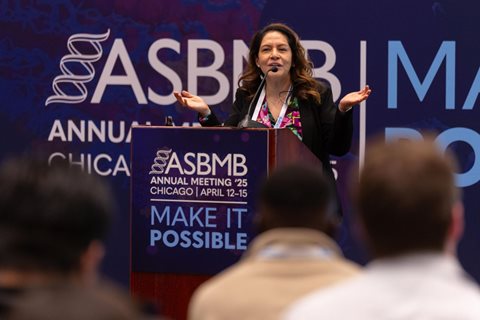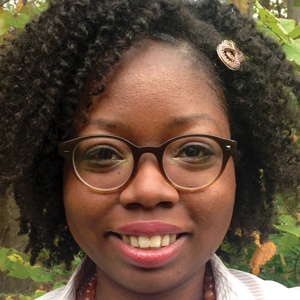From neuroscientist to science policy analyst
The presidential inauguration is coming up next week, and we’ll soon be learning more about the Biden administration’s scientific priorities, so I decided to interview a scientist who works in policy this week.
I talked to Nicholas Jury, a science policy analyst at the National Heart, Lung and Blood Institute, to learn about his transition from neuroscientist to science policy analyst.

Jury earned his bachelor’s degree in cell and molecular biology from Bradley University in Peoria, Illinois. He earned his Ph.D. in neuroscience from the University of Cincinnati, where he studied postpartum depression and won a National Institutes of Health Predoctoral Fellowship to fund his dissertation project.
Making the transition to science policy
While in graduate school, Jury realized he wanted to use his scientific skills to advise and inform people about science.
“I started looking for postdocs at the NIH because policy and legislation all revolved around D.C. I needed to be in that area if I was going to get a job and become an accomplished scientist,” he said.
Through the NIH Intramural Research Program, he looked at drug addiction and sex differences, using female rodent models and female participants in clinical trials. After that, he became a senior fellow at the National Center of Health Research, a public health think tank), for which he delivered testimony at Food and Drug Administration advisory committee hearings, went to Congress and lobbied about important issues.
For about three and a half years, he served as a contract policy analyst for several organizations. Then he heard about a job at the NHLBI doing legislative work, something he was passionate about. He applied and got it.
The daily life of a science policy analyst
Since then, Jury has held two positions at the NHLBI.
His first role involved working in an office that was primarily in charge of the stewardship of clinical trials and working with the chief science adviser on NHLBI’s clinical trial research enterprise.
“Our job was to make sure that the clinical trials were funded, participants were safe, investigators have resources, and meeting certain milestones in their in their grant,” he said.
He has been in his second role for a little over a year.
“In my current job, we are responding to people inquiring about health, communicating about science to broad audiences, including Congress, writing reports and submitting standing documents,” he said. “In a nutshell, I tell a really broad story about the successes of NHLBI-funded research and package it in a way that Congress can understand,” he said.
He added: “A lot of my job is about responding to congressional inquiries — like if a congressperson writes about a particular health topic. It is also putting our story into what is called the C.J., the congressional justification. Every government agency and the subdivisions compiles their part of the CJ, and that goes into the president’s budget at the beginning of next year.” This document outlines what the NHLBI is doing and how money is being used.
When he is not working on documents, he’s “providing visually pleasing statistics and graphs on our website to give (the public a better) understanding about who is affected by these diseases.”
Advice for job seekers
Jury knew what he wanted – a career outside of academia and away from the bench. So he looked for roles to position him for that career and even took a pay cut to get the experience he needed.
He said that flexibility is key, and you never know where a job can take you.
He also recommended the following.
Go on informational interviews: This is his No. 1 tip. Reach out to people in your alumni associations or people working in science policy. People are usually open to share, give advice and help you if you ask them. This is a great way to see if a science policy career is for you.
Find mentors: Find a sponsor who can support you. It would be great if they can become a mentor who can provide you with a recommendation letter.
Get speaking experience: Translate your own research for lay audiences. This includes your five-minute or 10-second elevator pitch. You should be able to compress all your technical information so the public can understand.
Get writing experience: As a science policy professional, you write a lot. Practice rewriting technical papers in a way that can reach multiple audiences. Start reaching out to the editor of your local newspapers to get a sense of writing to the public.
Exercise your problem-solving skills: “Being able to come up with a problem, find a solution to the problem, and then come up with pros and cons for each solution and thinking about how a policy solution affects different groups is policymaking distilled down to the basics,” he said.
Gain knowledge of government: Take time to learn the basics of government. Learn about the different agencies’ jurisdictions, how they interact, and how the legislative and executive branch interact with one other.
Apply for opportunities: Get involved in leadership, show that you’re passionate about an issue, and think about where you want work (advocacy, private sector, think tank or government). “Everything will build you toward that ultimate goal. If the opportunity doesn't present itself or the fellowship is not there, create your own opportunity or create your own group,” he said.
Enjoy reading ASBMB Today?
Become a member to receive the print edition four times a year and the digital edition monthly.
Learn moreFeatured jobs
from the ASBMB career center
Get the latest from ASBMB Today
Enter your email address, and we’ll send you a weekly email with recent articles, interviews and more.
Latest in Careers
Careers highlights or most popular articles

Building the blueprint to block HIV
Wesley Sundquist will present his work on the HIV capsid and revolutionary drug, Lenacapavir, at the ASBMB Annual Meeting, March 7–10, in Maryland.

Upcoming opportunities
Present your research alongside other outstanding scientists. The #ASBMB26 late-breaking abstract deadline is Jan. 15.

Designing life’s building blocks with AI
Tanja Kortemme, a professor at the University of California, San Francisco, will discuss her research using computational biology to engineer proteins at the 2026 ASBMB Annual Meeting.

Upcoming opportunities
#ASBMB26 late-breaking abstract submission opens on December 8. Register by Jan. 15 to get the early rate on our Annual Meeting.

Make your abstract stand out
Ensure your research is impossible to overlook. Get quick, practical reminders for crafting an abstract that attracts readers and helps you build connections at the conference.

Inside industry postdocs
As more Ph.D. scientists look beyond academia, industry postdocs offer a new kind of training, where mentorship meets mission-driven research. Fellows at Pfizer and Genentech share how these programs prepare them to translate discovery into impact.

